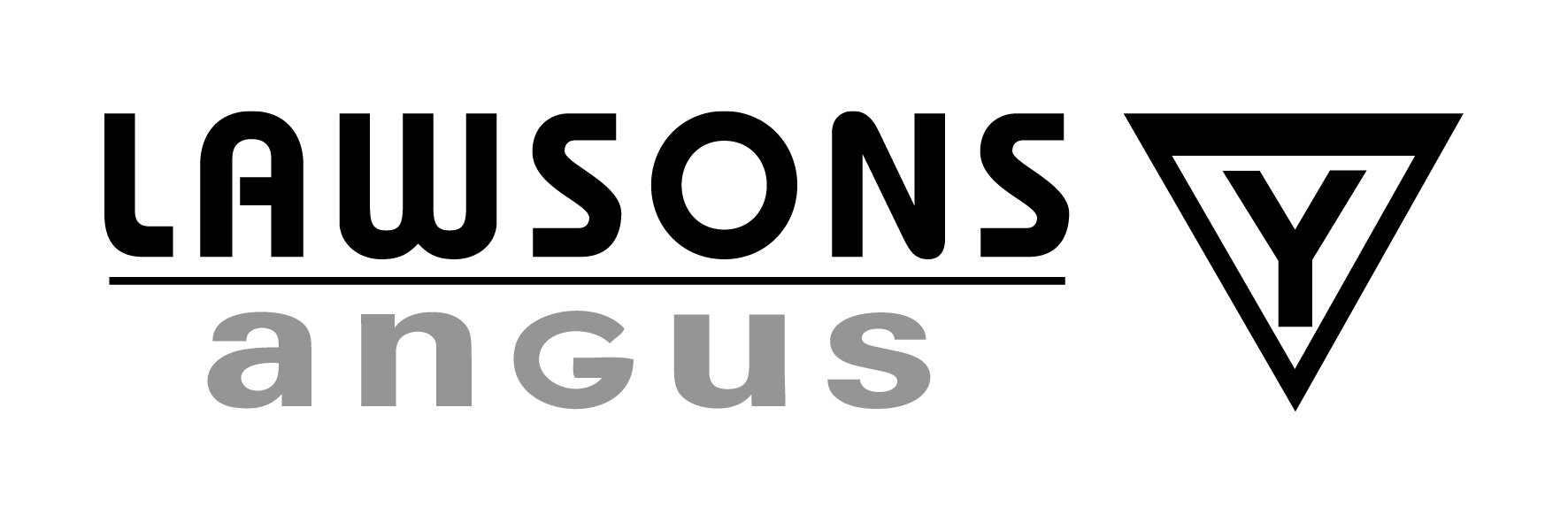Looking back on 50 years of science, not fiction at Lawsons Angus.
Harry Lawson looks back on the past 50 years at Lawsons Angus, how far they've come, and what's in store for the next 50...
After graduating from Lincoln University in 1989, I spent a couple of years working back on the farm before heading overseas in 1991. I ended up in LONDON working in genetics and in a larger advertising/marketing company.
Lawsons Angus Farm in Yea, Victoria
In 1993-1994 I spent over a year working and travelling in the US including going to many Universities, conferences and meeting some of the best seedstock herds (all breeds) and animal breeders in the world.
Part of this study trip was to better understand how the seedstock industry operated in the US. The timing was also good from a technology perspective, as embryo transfer and the ability to collect embryos on-farm in the US coincided with the start of our partnership with Gardiner Angus Ranch (GAR). In hindsight, most of what I have been doing since coming back to the business in 1994 was implementing the strategies and ideas that were formulated at that time.
Cattle genetics for self-replacing beef herds involves small cumulative gains, sometimes at a frustrating pace of gain.
However I’m sure – as many of our clients would agree – that the Angus genetics we work with today are vastly different to fifty years ago, with the advances we have made the last twenty five years even more significant.
We should never underestimate how far we have come and the gains made in the Angus breed.
The big impetus to start selecting for marbling and carcase traits came around 1985 when the Japanese market opened up and Australia and the US were head to head for grain-fed beef.
It was also the same time Breedplan was released, allowing us to compare animals objectively between herds and years.
Charlotte and Edward Lawson.
Since 1988 Lawsons Angus have weighed over 37,000 calves and contributed significantly to the development of performance recording in Australia.
These two factors combined changed the way forward for Angus cattle.
The ability to source sires from New Zealand and the US and the advancement of artificial insemination (AI) and embryo transfer enabled us to select performance sires on a global basis. This led to more rapid, predictable genetic gain.
I trained as an AI technician for the New Zealand Dairy Board and gained some valuable experience with reproductive technologies working for Riverina Artificial Breeders (RAB) for a summer while at University. All of these experiences were valuable tools for the future.
When I returned to the farm in 1994, we set about expanding the herd and moved to 100% AI/ET. In just over 10 years we increased the cow herd from 300 cows to 2,500. We have not used a natural mating bull in our nucleus stud herd since 1994 and stick to a 45 day joining period. This is important in maintaining selection pressure on fertility, but is also why our contemporary and Breedplan data is so accurate.
ABOVE:This Lawsons Angus bred steer sired by Paringa Judd J5 was over 400kg carcase weight and marble score 6 with only 17mm subcutaneous (waste) fat after 150 days on feed (high roughage ration).
With over 25 years selection for carcase traits Lawsons Angus remain the best source for superior carcase traits. These Sale bulls have the highest marbling of all current bull sales and average in the top 8% of the breed. They are also the highest across all $ Indexes including Heavy Grain Index (average $169 for GRN, top 5% of the breed).
The features that really set these Sale bulls apart is their unique combination of calving ease, high growth and moderate cow size, combined with elite carcase genetics.
The development of ultrasound technology in the early 1990's and the ability to measure intramuscular fat, subcutaneous fat and eye muscle area on live animals greatly enhanced our progress with improvement of carcase traits.
We set up a trial with Melbourne Water and Australian Meat Holdings (AMH) to track over 400 steers from birth and slaughtered them in one day. This is still one of the largest and most significant progeny test programs ever done. It demonstrated unequivocally that ultrasound could accurately rank sires for carcase traits at a younger age on live animals. We have scanned over 25,000 animals since 1989!
Now the big change in Angus cattle is their ability to convert grass more efficiently into quality beef. At the same time, by maintaining our focus on calving ease and moderate mature cow size we have “built” an Angus cow that is still suited to a wide range of production systems in Australia.
Going Forward...
Going forward we will see the leading performance Angus breeders globally continue to evolve. Our focus is primarily on finding optimal performance for traits and using new tools like Feed efficiency and genomics to identify animals that are more productive, more fertile and drought tolerant. In short, our aim is to identify animals that produce more with less. Our new GrowSafe Feed Intake and GrowSafe Beef systems provide a competitive edge for Lawsons Angus clients.
There are many people that have contributed greatly in helping us achieve our goals, none more important than our clients that continue to support us.
Thank you.













